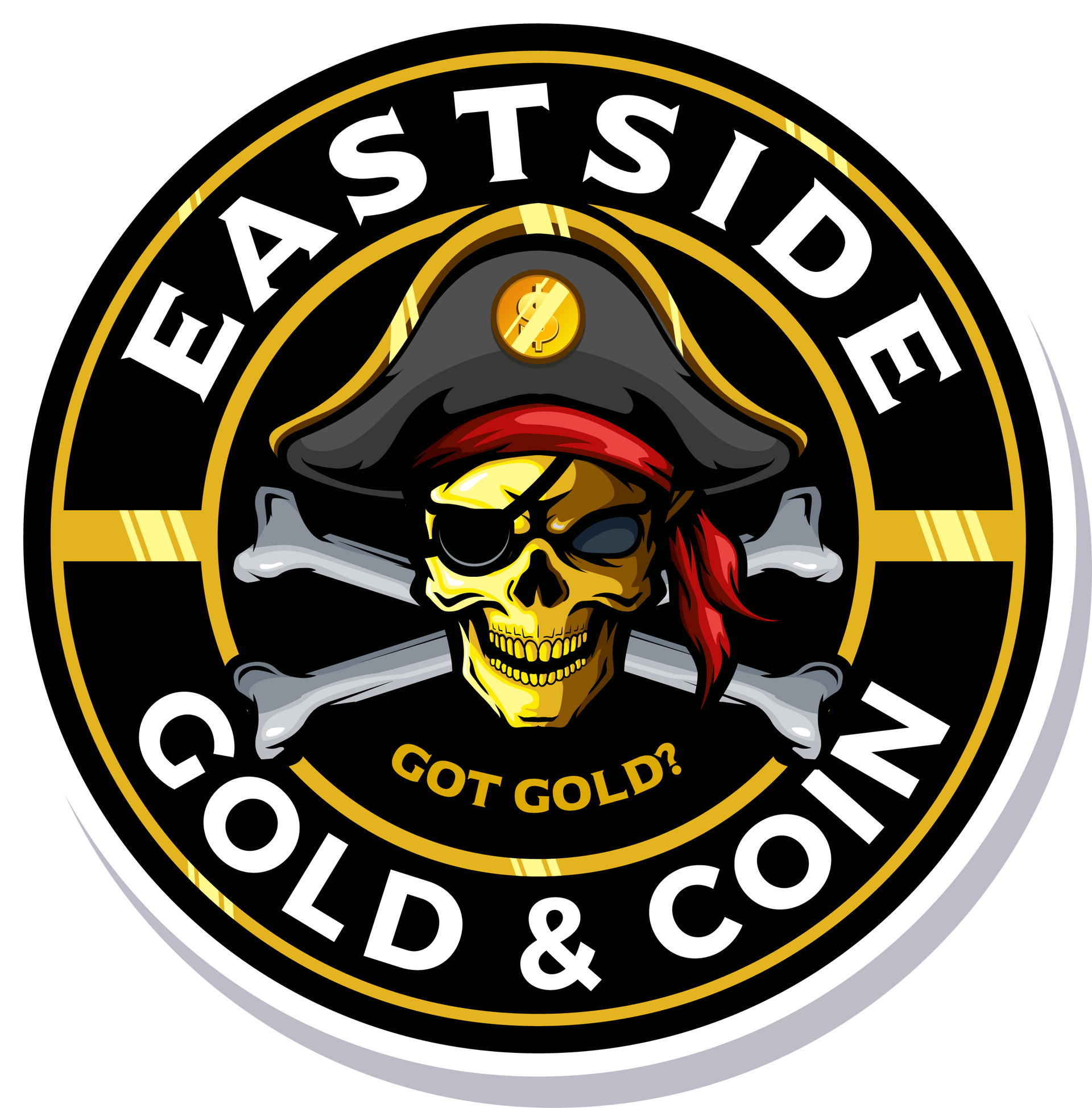Standing Liberty Quarter
Struck by the United States Mint from 1916 to 1930, the Standing Liberty quarter is the one quarter dollar, 25-cent coin that preceded the Washington quarter, which we all know and love to this day. Before Standing Liberty was the Barber quarter, which was produced by the US Mint beginning in 1892. The Standing Liberty quarter features the strong image of the goddess of Liberty on its obverse. On the coin’s reverse is the image of an American eagle in mid flight. The coin is noted for its beauty, which was designed by the late American artisan and sculptor, Hermon Atkins MacNeil.
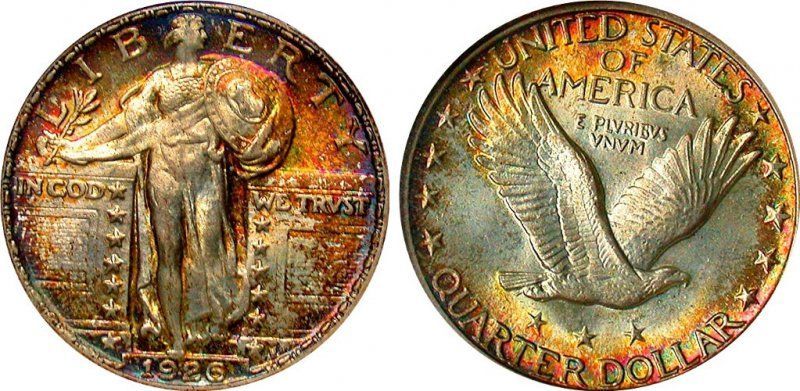
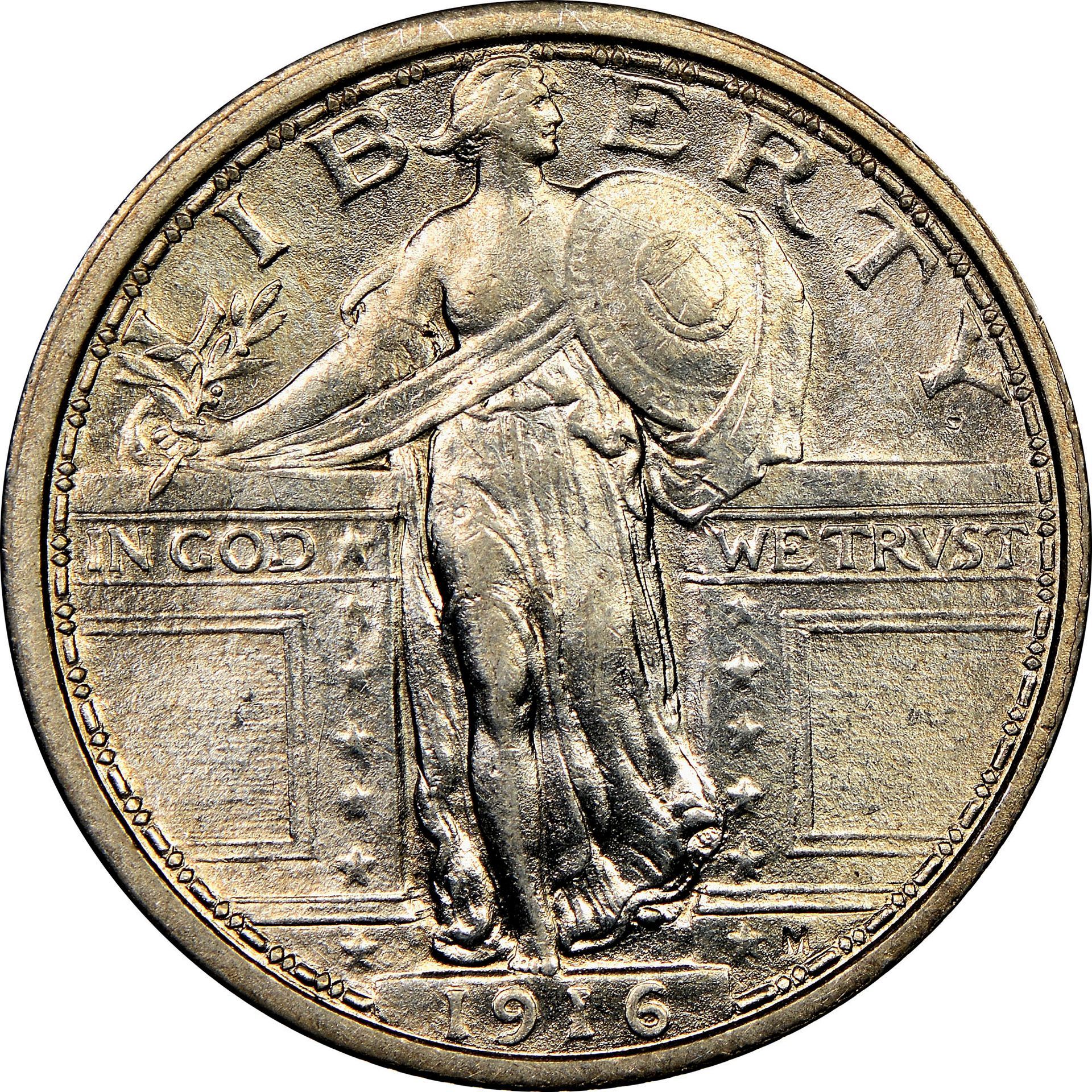
Information about the Standing Liberty Quarter
- It is minted in the United States
- Its value is 25 cents or .25 US dollars; also called a quarter dollar
- The coin’s mass is 6.25 g
- Its diameter is 24.3 mm
- It is composed of a combination of silver and copper
- It was minted from 1916–1930
- This coin beholds a mint mark. You’ll see the initial D or S to the left of lady liberty’s feet on the coin’s obverse. D is for coins produced in Denver; S is for coins produced in San Francisco.
- Coins produced by the Philadelphia Mint do not contain a mint mark

History of the Standing Liberty Quarter
In 1915, under the charge of the then-US Mint director, Robert W. Woolley, the mint began to inquire about the replacement of the Barber dime, quarter, and half dollar. Woolley believed that changing the design was required by the law, but we now know that he was mistaken and a new design was not necessary.
So, Wooley set out to redesign the coins and he’d heard about the work of Hermon MacNeil, a well-known sculptor and artist, after he submitted a design to the Mint. MacNeil’s original design was considered militaristic, as it featured Lady Liberty standing strong as she guarded these beautiful states against a proverbial attack, whether foreign or domestic. At that time in US history, the US was involved in WWI. Woolley and the Mint asked MacNeil to go back to the drawing board and submit a new design. What MacNeil came up with was a design that incorporated Lady Liberty in the middle and a duo of dolphins swimming in the water on either side of her. The dolphins were meant to highlight our oceans, the Atlantic and Pacific.
By the year of the release, 1916, the US Mint went behind the artist’s back and made a series of major changes to the design. MacNeil was not consulted and was rightfully bothered by the lack of communication. He made a series of complaints, in 1916 and then again in January of 1917 when the coin’s new issue was sent for approval. Woolley and the Mint decided to let MacNeil design the coin he wanted and, in order to give the sculptor autonomy to do that, special legislative approval was sought and obtained. An example of one of the changes MacNeil made was to add a chain mail vest to cover Lady Liberty’s exposed breasts. In the previous 1916 and 1917 design, Lady Liberty’s chest was bare.
One important thing to note about this coin is that when it reached circulation, the Mint began to notice that the date inscribed on the coin wore away quickly. By 1925, the US Mint had a solution whereby its engravers modified the design. From 1925 on, the dates on the coins are more prevalent.
In 1931, after a fifteen year production, the US Mint discontinued the coin. That year no quarters were struck. In 1932 a new coin made its debut – the Washington quarter. The coin came about by decree of a Congressional act. It was the first time a president’s profile was put onto a coin. For this momentous “first,” the US Mint chose to use the image of our first president, and thus, the Washington quarter was born.
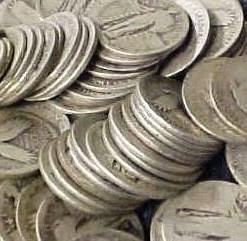
Can I sell my Standing Liberty Quarter?
Yes. Buying and selling these coins is fun, whether you’re a veteran collector, someone “getting into coins” or you’re just trying to make a few bucks. The first and most important thing, of course, is that you’ll want to work with a broker that knows the value of these coins. Because these coins were produced from 1916 to 1930 and some of the earlier coins are missing their date stamps, it’s especially important to work with someone that knows what they’re doing. This, and other reasons, are why it’s essential to work with a dealer that knows coins. In order to get the best results, a reputable dealer is always necessary.
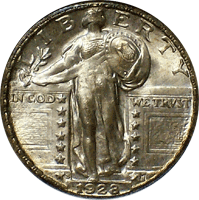
Where can I buy a Standing Liberty Quarter?
These coins are bought and sold online and in brick and mortar stores. As always, working with a trusted dealer is your best bet. You can find dealers online, in community posts and locally, through word of mouth, advertisements, etc.
Choose Eastside Gold and Coin Exchange
Eastside Gold and Coin Exchange holds the utmost respect for you and your valuables. When you visit us, we make sure that you feel welcome, and that your property is protected. We use industry-standard equipment to ensure accurate measurement of your valuables, and we have a special process to keep your valuables safe. Our accuracy enables us to offer you top dollar, and we have several different payment methods available for your convenience, so you won’t be waiting around to get paid.
Eastside Gold and Coin Exchange will purchase any kind of gold you bring us, including 8-karat, 10-karat, 14-karat, 18-karat, 21-karat, 22-karat, 24-karat, or anything else. We buy gold bars, gold bullion, gold jewelry and some gold plated items like pocket watches. If you happen to be in possession of an exclusive piece made by a top gold designer such as Cartier, Tiffany, Rolex, or Patek Philippe, we will often pay more than the weight of the item. Such special pieces often command a higher price on the secondary market due to their superior craftsmanship.
